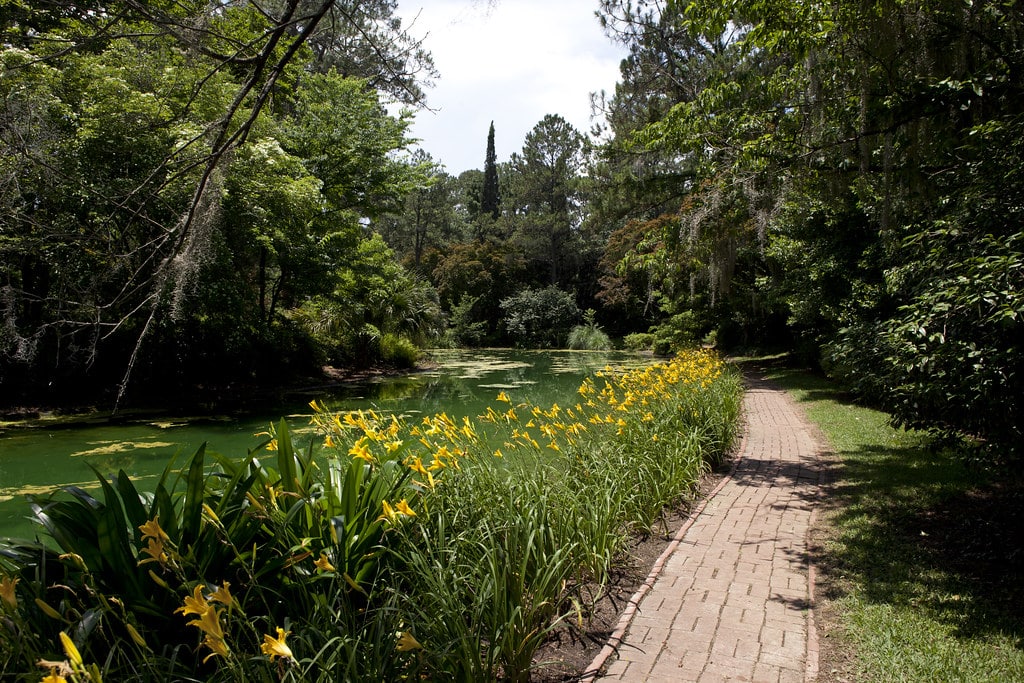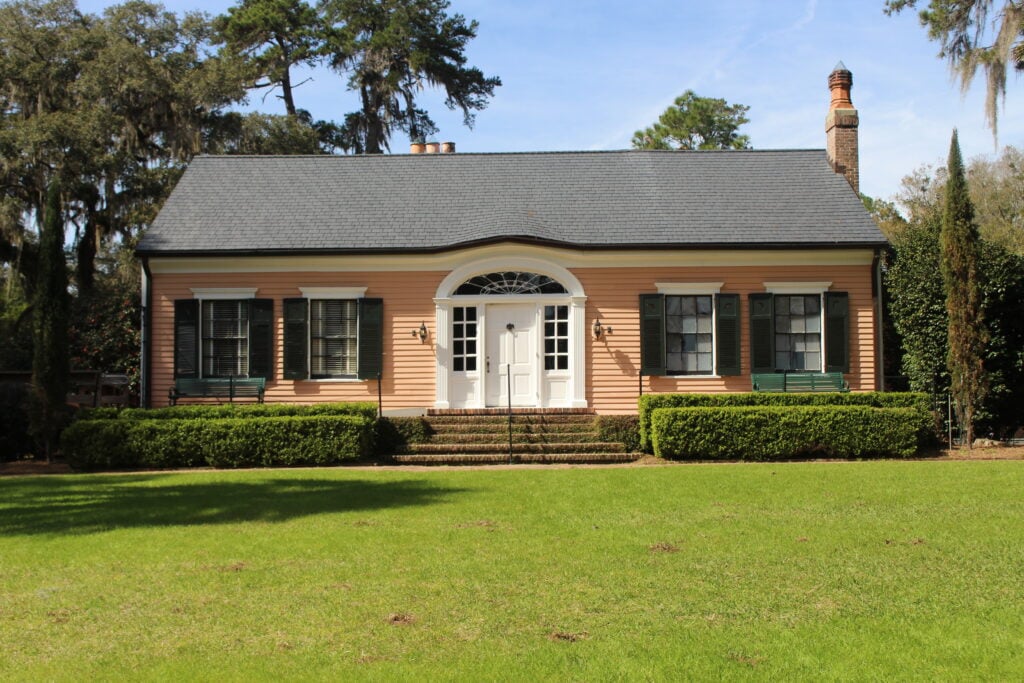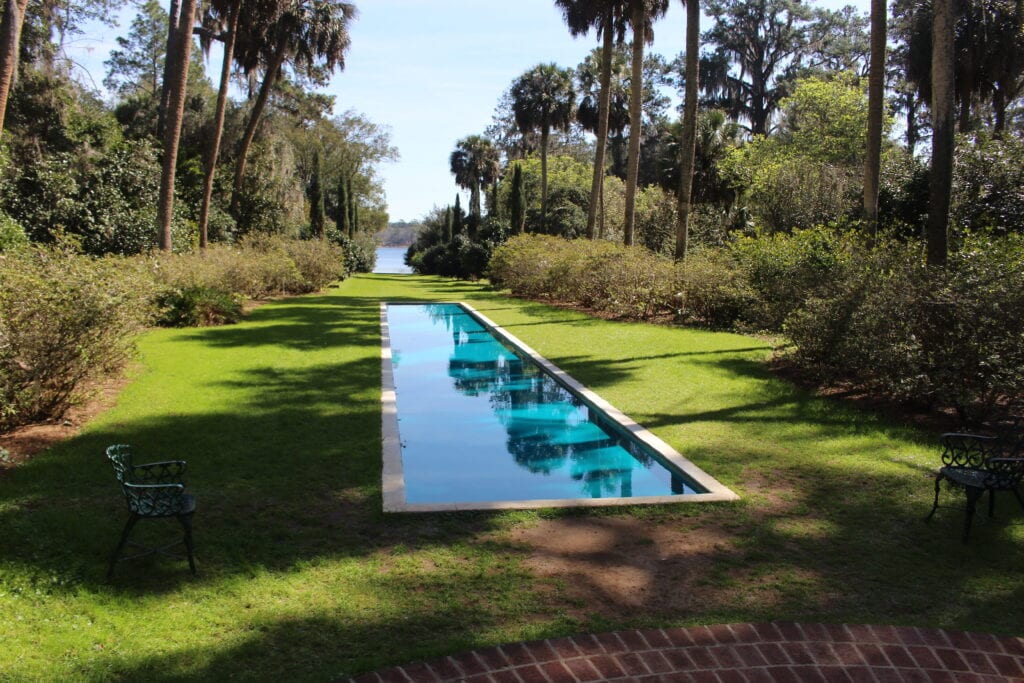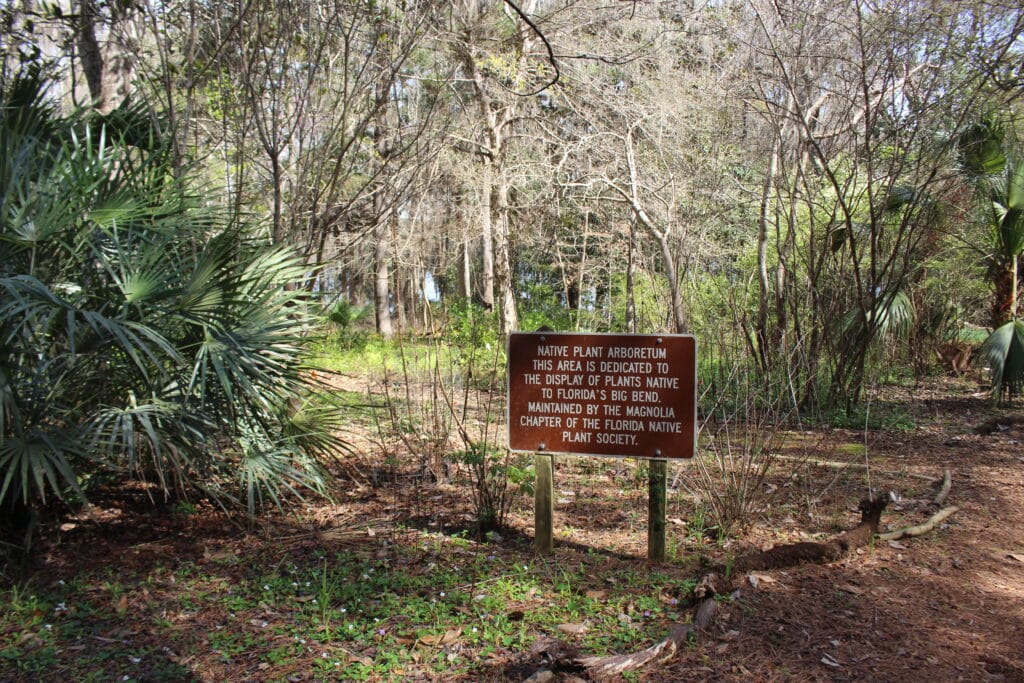Introduction to Alfred B. Maclay Gardens State Park
In Tallahassee, Florida, Alfred B. Maclay Gardens State Park is a testament to botanical beauty and historical richness.
Established in 1953, this 1,176-acre park at 3540 Thomasville Road has evolved from a private recreational estate into a public state park, attracting nature enthusiasts and history buffs alike.
The park's origins trace back to the Lafayette Land Grant and its early days as part of the Andalusia Plantation.
In 1923, Alfred Barmore Maclay, a New York financier, transformed the land into a stunning garden, a project passionately continued by his wife Louise after he died in 1944.
The Maclays' dedication culminated in opening the gardens to the public in 1946, offering a glimpse into Florida's diverse flora and fauna.
The park, designated as a U.S. historic district known as the Killearn Plantation Archeological and Historic District since 2002, houses 18 historic buildings, four structures, and four objects, each narrating a unique story of the past.
Things to do in Tallahassee, Florida, are enriched by the park's myriad recreational activities, from scenic walking trails to the enchanting Maclay House, open for tours during the high-blooming season from January through April.
Alfred B. Maclay Gardens State Park, with its blend of natural beauty and historical significance, continues to be a cherished landmark in Florida's capital city.
The Historical Tapestry of Alfred B. Maclay Gardens
The Park's Early Beginnings
Alfred B. Maclay Gardens State Park's story begins with its roots in the Lafayette Land Grant, a significant historical event in Florida's past.
This land, once part of the expansive Andalusia Plantation, was primarily used for cotton cultivation, reflecting the agricultural trends of the era.
The transformation of this landscape began in 1882 when a vineyard was established, marking the region's foray into wine production.
However, this venture was short-lived as Leon County, embracing the temperance movement, voted to go dry in 1904, leading to the vineyard's closure.
From Quail-Hunting Estate to Botanical Garden
The property's next chapter unfolded as Lac-Cal, a quail-hunting estate, showcasing the recreational evolution of the land.
In 1923, a pivotal change occurred when Alfred Barmore Maclay, a prominent figure in New York's financial sector, acquired the 1,935-acre Lac-Cal estate and adjoining lands.
This acquisition, totaling 3,760 acres, was renamed Killearn in homage to Maclay's Scottish heritage.
Maclay's vision transformed the estate into a botanical paradise, a project he passionately pursued until he died in 1944.
Transition to Public State Park
The gardens' journey to becoming a public state park is intertwined with Louise Maclay's dedication to her husband's legacy.
In 1946, two years after Alfred's passing, she opened the gardens to the public, sharing their beauty with the wider community.
This act of generosity culminated in 1953 when she donated 307 acres of the estate, including the gardens, to the predecessor of the Florida Department of Environmental Protection.
This significant donation ensured the preservation and public enjoyment of the gardens. In 1965, to distinguish it from the adjacent Killearn Estates development, the gardens were renamed in honor of Alfred B. Maclay.

A Botanical Wonderland
The Backbone of the Garden: Azaleas and Camellias
The Alfred B. Maclay Gardens are renowned for their spectacular collection of azaleas and camellias, forming the backbone of the garden's plantings.
These blooms, with their vibrant colors and varieties, create a mesmerizing spectacle, especially during the peak blooming season.
The gardens boast an impressive array of these species, drawing botanists and enthusiasts from far and wide.
Diverse Flora and Fauna
Beyond azaleas and camellias, the park is a haven for various plant species. Notable trees like the bald cypress, black gum, and Japanese maple add to the park's botanical diversity.
The gardens also feature a rich collection of other plantings, including Rhododendron chapmanii, Gardenia, and Yucca filamentosa, contributing to the park's status as a botanical treasure.
The Native Plant Arboretum
A significant addition to the gardens is the Native Plant Arboretum, maintained by the Magnolia Chapter of the Florida Native Plant Society.
This area showcases local flora, including Piedmont azaleas and Florida flame azaleas, offering visitors a glimpse into Florida's native plant heritage.
The arboretum is an educational and conservation site promoting the importance of native species in Florida's ecosystem.
The Maclay House: A Glimpse into the Past
The Historical Significance of the Maclay House
The Maclay House, constructed in 1909, is a centerpiece of the Alfred B. Maclay Gardens State Park, offering visitors a window into early 20th-century life.
This historic house, preserved in its original form, represents the Maclay family's residence in Florida.
The architecture and furnishings of the house reflect the period's style, providing an authentic experience of the era's domestic life.

Inside the Maclay House
Upon entering the Maclay House, visitors are transported back in time. The interior is meticulously furnished to mirror the Maclay family's residency, with period-appropriate decor and artifacts.
Each room within the house tells its own story, adorned with furnishings and personal items that belonged to the Maclay family, offering insights into their lifestyle and the era's cultural milieu.
Public Tours and Educational Role
The Maclay House is not just a historical exhibit; it plays a crucial educational role in the park.
Open for public tours during the high blooming season from January through April, the house serves as a living museum.
These tours provide an immersive educational experience, highlighting the historical and cultural significance of the Maclay family and their contribution to the region's horticultural heritage.
Recreational Activities and Amenities
A Hub for Outdoor Activities
Alfred B. Maclay Gardens State Park is a paradise for outdoor enthusiasts, offering various activities.
The park's extensive network of trails caters to hikers, bikers, and equestrians winding through the picturesque landscape.
Lake Hall, a park focal point, invites visitors to enjoy swimming, fishing, canoeing, and kayaking. Boats without gas-powered motors are permitted, ensuring a serene experience on the water.
Picnicking and Relaxation Areas
The park is equipped with numerous amenities to enhance the visitor experience. Scattered throughout the park are pavilions and grills, perfect for picnics and family gatherings.
These areas, set against the park's natural beauty backdrop, provide ideal spots for relaxation and socializing.
Hosting Events and Programs
Alfred B. Maclay Gardens State Park is a recreational site and a venue for various events and programs.
The park hosts annual events like the Tour of Gardens in May and Camellia Christmas in December, attracting visitors for unique experiences.
The park's facilities are also available for private events, including weddings and receptions, offering a picturesque setting for special occasions.

Ecological Significance and Conservation Efforts
Preserving Biodiversity in the Park
Alfred B. Maclay Gardens State Park is crucial in preserving the region's ecological diversity. The park's varied habitats, including its lakes, woodlands, and gardens, are home to many wildlife.
Efforts to maintain these habitats are vital for the survival of many local species, making the park an important ecological sanctuary.
Environmental Protection Initiatives
The park's management implements various conservation initiatives in collaboration with environmental agencies.
These efforts focus on protecting native species, restoring natural habitats, and managing invasive species.
Educational programs to raise awareness about environmental protection are regularly conducted, engaging visitors in the park's conservation mission.
Volunteer and Community Involvement
The involvement of volunteers and local organizations is integral to the park's conservation efforts.
These groups assist in various activities, from habitat restoration to educational outreach, demonstrating the community's commitment to preserving the park's natural beauty and ecological importance.
Alfred B. Maclay Gardens in Popular Culture and Media
Recognition and Awards
Alfred B. Maclay Gardens State Park has garnered recognition for its stunning beauty and historical significance.
It has been featured in various media outlets and has received accolades for its botanical richness.
This recognition highlights the park's importance and attracts visitors from across the country, contributing to its status as a prominent tourist destination.
The Park in Media and Tourism
The park's picturesque landscapes have made it a popular location for photographers and filmmakers, enhancing its visibility and appeal.
Its inclusion in travel guides and tourism promotions has made it a must-visit destination for those exploring Florida's natural and historical attractions.

Reflecting on Alfred B. Maclay Gardens State Park's Legacy
A Testament to Natural and Historical Harmony
As we conclude our exploration of Alfred B. Maclay Gardens State Park, it's evident that this park is more than just a collection of plants and historical buildings.
It is a testament to the harmonious blend of natural beauty and historical preservation. The park's ability to maintain this balance while offering many recreational and educational opportunities is remarkable.
The Park's Enduring Impact
The enduring impact of Alfred B. Maclay Gardens State Park on its visitors and the community is undeniable.
It serves as a green oasis in Tallahassee, offering a tranquil escape from the hustle and bustle of city life.
The park's commitment to conservation and its role in educating the public about Florida's ecological and historical heritage ensure that it will continue to be a cherished landmark for future generations.
A Living Legacy
Alfred B. Maclay Gardens State Park is a living legacy, a place where history, nature, and culture intertwine.
Its continued popularity and recognition are a tribute to the vision of its founders and the dedication of those who have worked to preserve its beauty and significance.
As the park moves forward, it remains a vibrant and vital part of Florida's landscape, inviting all who visit to experience its unique blend of past and present.
